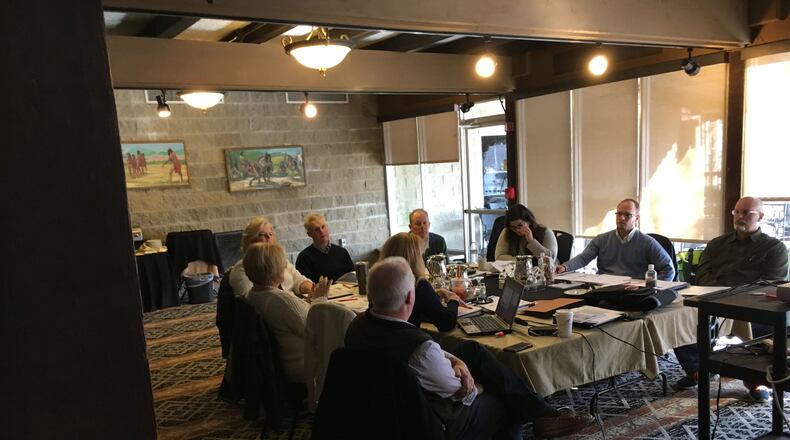Council reviewed the progress of the city over the past three years and the efforts being made to streamline city government. It also received an overview of the city’s economic development efforts and incentive programs available to attract and retain businesses and create new jobs.
Adkins said the city is looking at developing a 10- to 20-year housing revitalization plan that would both look to develop buffers between residential and heavy industrial areas as well as rehabilitate the city’s neighborhoods.
“We’re still working to identify a process to establish a policy,” he said. “Once we figure what we’re going to do, we can decide on what tools to use.”
Last May, Adkins made a presentation outlining the city’s housing issues to illustrate the need to balance the city’s housing stock to better understand the scope of the problem and how it affects the city’s property values.
MORE: Middletown housing: Landlords weigh in on need for balance
Adkins said the city would work from a least intrusive to most intrusive process to create buffers by addressing vacant property, out of town landlords with vacant property and local landlords with vacant property before reaching any homeowners.
As for rehabilitation of the neighborhoods, he said a plan would be developed to include housing with new construction options and upper-end housing, downtown market rate living options, new market rate apartments and renovating existing neighborhoods outside of the buffer areas.
Adkins said in the last Census estimate released in 2015, the city had about 3,000 vacant housing units.
“There are lots of places to start without impacting anybody,” he said.
The plan would also focus on developing a diverse and balanced housing stock to create the best choices in single/multi-family housing types, the mix of bedrooms and square-footage in housing, historic or new construction, affordability, amenities and density. He also said the city needs to work to ensure all structures are 100 percent compliant with the city codes.
In 2018, Adkins said a housing committee will be re-established that will include realtors, landlords, bankers, home builders, remodelers, nonprofit housing, Community Aligned for Real Equity representatives, council members, community revitalization, police and fire department representatives.
He said the committee would be created “as fast as we can do it right. There is no set timetable. We’re not just checking a box. We’re looking for long-term improvement for the community.”
In addition, city officials will go into the community to have conversations about housing needs. From those conversations, Adkins said he hopes to turn the concepts into a city housing policy that council will eventually approve.
Adkins outlined a number of tools and programs that other Ohio cities have utilized such as converting vacant properties into pocket parks or other neighborhood uses; flipping houses from the Butler County Land Bank to resell to a homeowner; in-fill new construction; housing for city/school professionals; maintenance assistance programs to assist elderly homeowners and other grant programs.
About the Author

